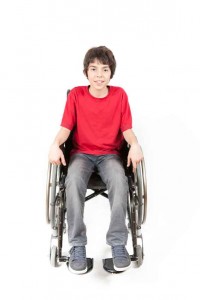$18.3 Million Awarded in Cerebral Palsy Lawsuit
 A Kentucky mother has been awarded $18.3 million by a jury on behalf of her disabled son. The child has been diagnosed with spastic quadriplegic cerebral palsy, the most serious type of spastic cerebral palsy. In his cerebral palsy lawsuit, his mother alleged his injuries were due to negligence by hospital staff during the labor and delivery process.
A Kentucky mother has been awarded $18.3 million by a jury on behalf of her disabled son. The child has been diagnosed with spastic quadriplegic cerebral palsy, the most serious type of spastic cerebral palsy. In his cerebral palsy lawsuit, his mother alleged his injuries were due to negligence by hospital staff during the labor and delivery process.
The boy was born at T.J. Samson Community Hospital in Kentucky in 2007. During labor, the plaintiff alleges nurses overseeing her care increased her Pitocin dosage without the authorization of her obstetrician. Pitocin is a drug given to women to bring on labor in cases where labor is not beginning or progressing as it should. The plaintiff further asserts that the increase in Pitocin contributed to her son’s birth injuries.
Award after short deliberation
After hearing all the evidence in the case, the jury deliberated for less than 90 minutes before reaching their verdict. Their decision went completely against the hospital; the physician that delivered the child was cleared of charges of medical negligence. In fact, the plaintiff’s attorney asked the jury not to find against the doctor and instead hold the hospital wholly responsible for the birth injuries incurred.
The birth injury lawsuit was filed in Barren Circuit Court in 2011 by the mother plaintiff on behalf of her injured child. The verdict was reached November 25, 2014. Since that time, T.J. Samson Community Hospital officials have asked that the decision be altered or reversed or for a new trial to be granted. Hospital officials have cited various reasons for the request, including lack of insurance coverage for the full amount and insufficient evidence to link the actions of hospital staff to the birth injury.
What is cerebral palsy?
Cerebral palsy is a condition resulting from damage to the brain that impacts a person’s ability to move. The group of disorders that makes up cerebral palsy can vary considerably from patient to patient, and may also affect speech, hearing and vision. Children diagnosed with cerebral palsy may require a lifetime of medical care and some may never be able to walk on their own.
The causes of cerebral palsy may vary, although oxygen deprivation at the time of the baby’s birth can contribute to the condition. Damage to the brain can occur during pregnancy, the birth process or shortly after birth. Early signs of the condition may vary, since there are many different types of cerebral palsy and each presents with its own unique symptoms.
Spastic cerebral palsy is caused by damage to a particular area of the brain and is characterized by muscle stiffness and awkward movements. Spastic quadriplegia the most serious type of spastic cerebral palsy, because it affects all four limbs. Patients with this type of cerebral palsy may never be able to walk and may have other medical issues like seizures, intellectual disability and speech, vision and hearing impairment.
In this medical malpractice lawsuit, the mother plaintiff told the jury her son has to take five medications daily and will require both occupational and physical therapy until the age of 21 or possibly longer. The boy, now seven, also requires a device for communication and must now learn sign language. She told reporters that although no amount of money will reverse the damage to her son, there is peace of mind in knowing he will get the care he needs for the rest of his life.
- Glasgow Daily Times, Updated: Mother in $18.3 Million Verdict Says Money will Provide Security for Son, http://www.glasgowdailytimes.com/news/updated-mother-in-m-verdict-says-money-will-provide-security/article_bf004632-7512-11e4-bef2-9379ddcca05d.html
- Glasgow Daily Times, Hospital Asks that Verdict be Reversed, http://www.glasgowdailytimes.com/news/hospital-asks-that-verdict-be-reversed/article_08a29c44-84e1-11e4-9331-07d6a5fcee96.html
- CerebralPalsy.org, Types of Cerebral Palsy, http://cerebralpalsy.org/about-cerebral-palsy/types-and-forms/
- Centers for Disease Control and Prevention, Facts about Cerebral Palsy, http://www.cdc.gov/ncbddd/cp/facts.html


 Resources
Resources
 Resources
Resources
